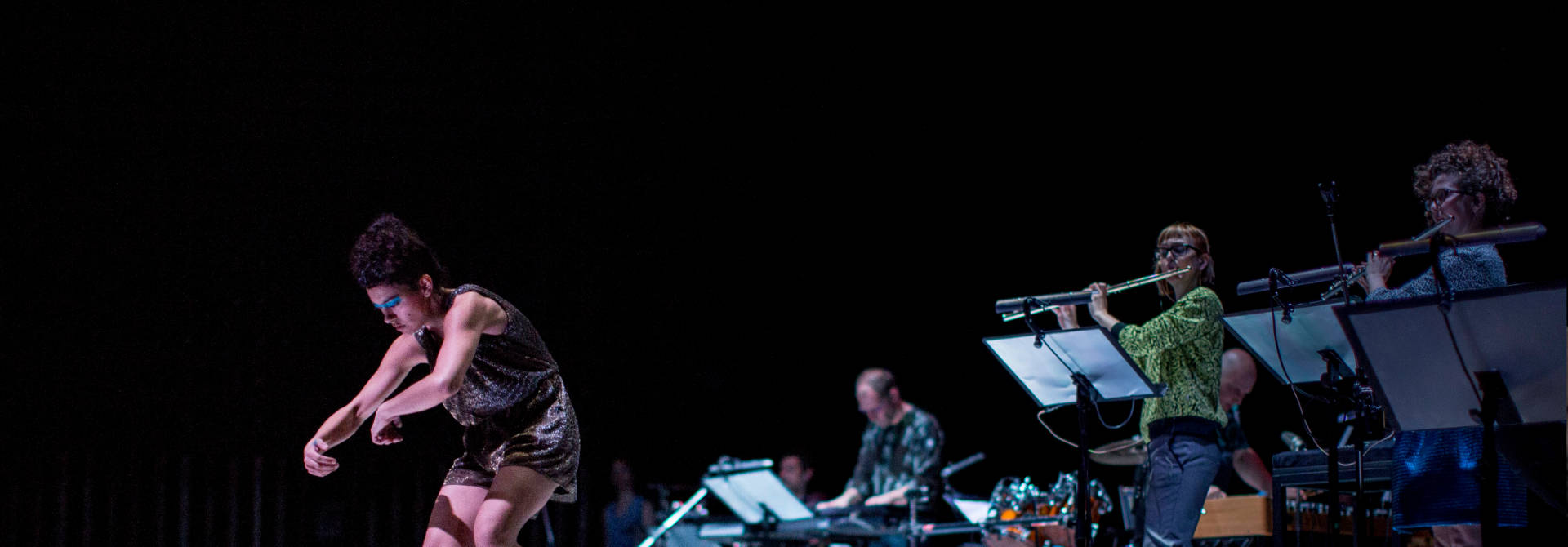
CONCRETE
“Since Professor, Maud Le Pladec does research on dance connections on the expressive potential of contemporary music. From Fausto Romitelli’s rough distortions to Julia Wolfe’s rhythmic constructions, she clears sound territories that push her to challenge her choreographic vocabulary inventing forms that dialogue, interact, resonate, or rub against the singularity of these riffs, frequencies and loops.
Continuing the exploration of American post-minimalist music begun with Democracy, Concrete dives into a dense and colourful material. Written in the mid-1990s, Michael Gordon’s Trance suggests the minimalist influence of the 80s and 90s noise filter: this score, both repetitive in its structure and baroque in its textures, allows him to experiment with aesthetic hybridisations, where the orchestra collides with pop, glam-rock with meditation.
To choreograph these trances and immerse the audience in a hypnotic drift, she placed herself at the edge of the genres and registers deafening matter a group of spectral creatures sounding all out right of Ziggy Stardust’s brain. Oscillating between several states, the dancers take turns at each other’s elements of the orchestra, voices that adjust to the composition, subliminal figures or mobile elements displacing attention, marking areas of meditation, vertigo, moving from the frenetic dance floor to the immobility of the statues. Like intercessors who circulate the intensity of the instruments to the bodies and the bodies to space, they never cease to interact or disturb the musical flow, to blend into it or to widen its perimeter.
Connected to alternating current, their silhouettes highlighted by light drift along these trances as signs bearing intertwined reference layers. Between inner journey and transformation of space, Concrete deploys different levels of listening and porosity to music. Invisible or overexposed, the dance digs into the holidays, cuts the scene, erases, rewrites, highlights, amplifies activating a phantom, subliminal perception, where everything seems to float between infinite speed and vibratory immobility. ”
— Gilles Amalvi
Photo: Konstantin Lipatov
Credits
